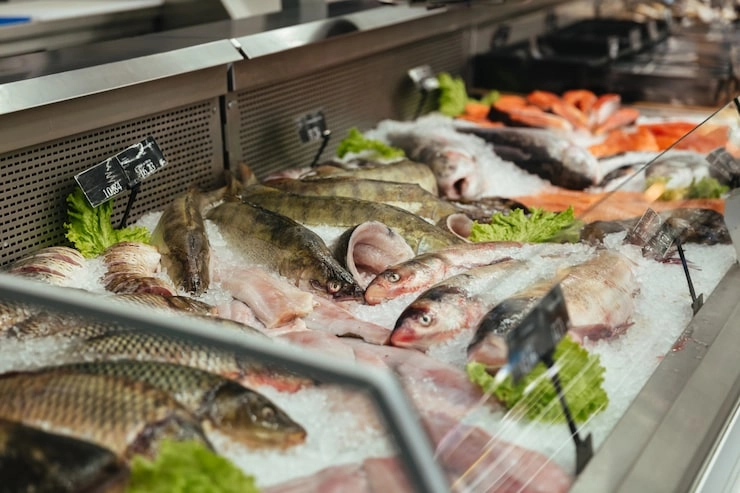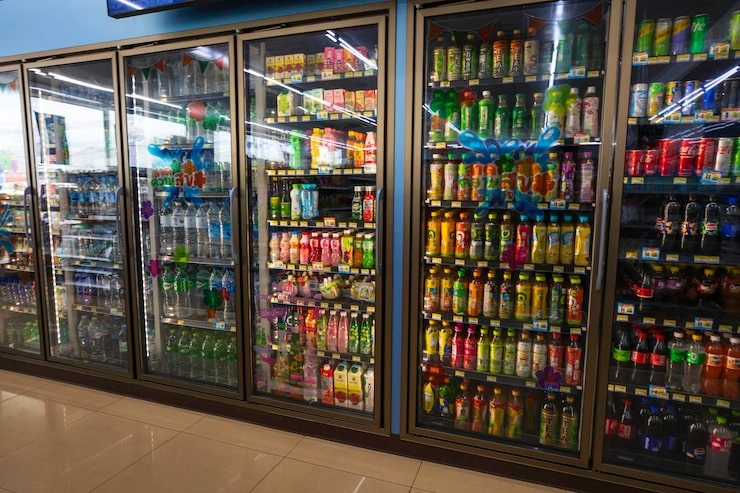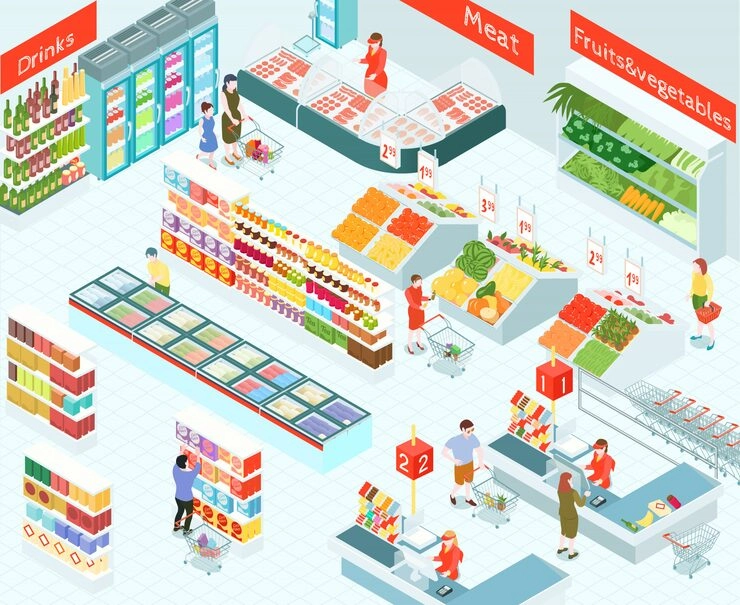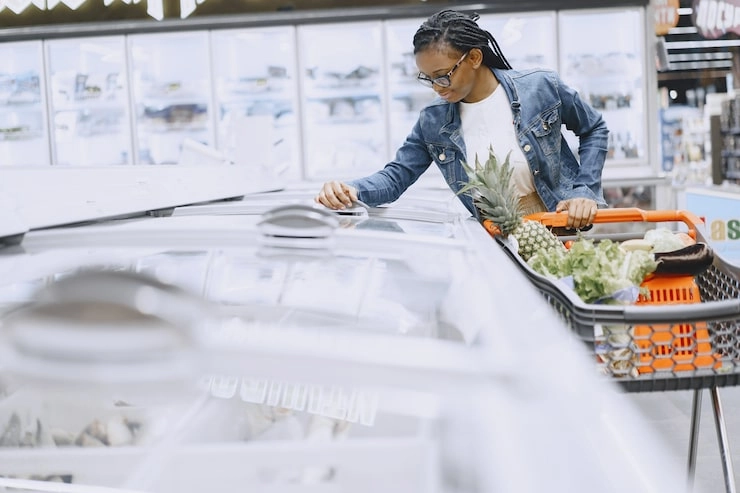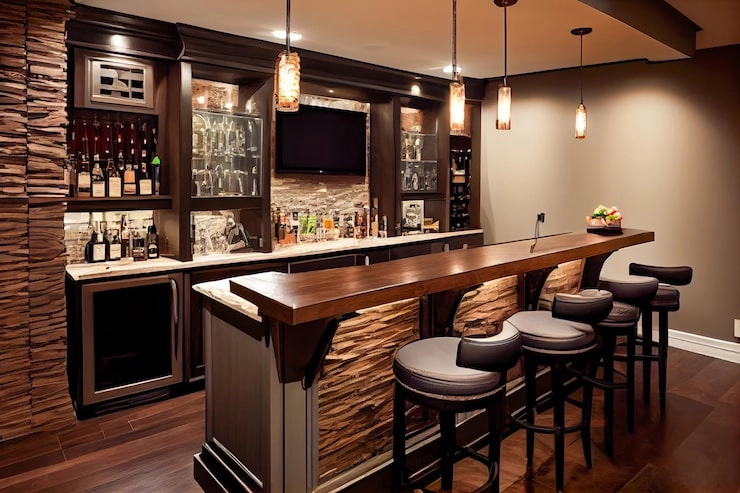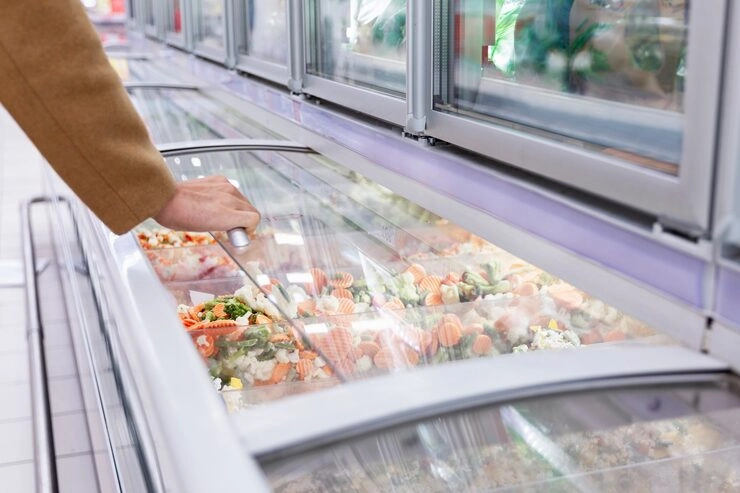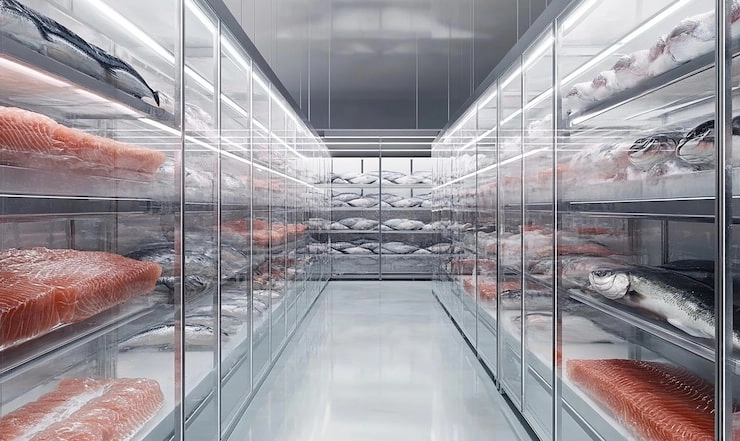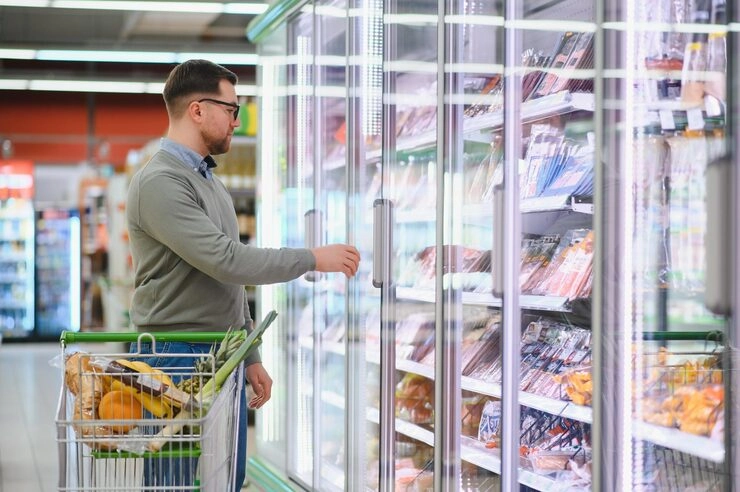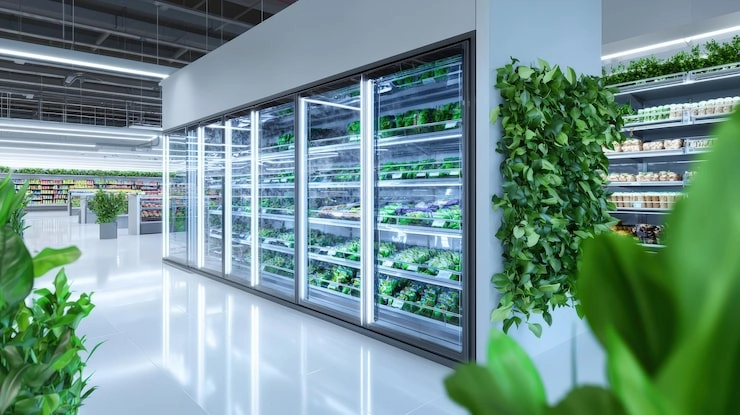For businesses like supermarkets, eateries, and food plants, dependable cooling isn’t just a nice-to-have—it’s essential. Keeping food fresh, safe, and up to code relies completely on steady cold temperatures. But, this stability is at serious risk for companies in places where power cuts happen often.
Power failures can happen for many reasons. Maybe it’s a storm, a grid problem, or even planned work. No matter the cause, they present major threats. Without a solid backup plan, even a brief outage can mean huge losses in products and a big mess for business operations. That’s why creating a good backup system for commercial fridges is so important to lessen these dangers.
A great backup solution has three main jobs. First, it keeps temperatures stable when the power is out. It also cuts down on how long the business is down. Finally, it protects precious stock. This article will show you how to build these kinds of systems for regions where the power often goes out.
Key Temperature Requirements for Commercial Refrigeration
Commercial coolers are built to work in very specific temperature zones, all depending on what’s inside. Usually, industrial freezers stay at or below -18°C (0°F). Modern commercial display island freezers for frozen food are a perfect case of equipment made to reliably hold these vital low temperatures in a store setting.
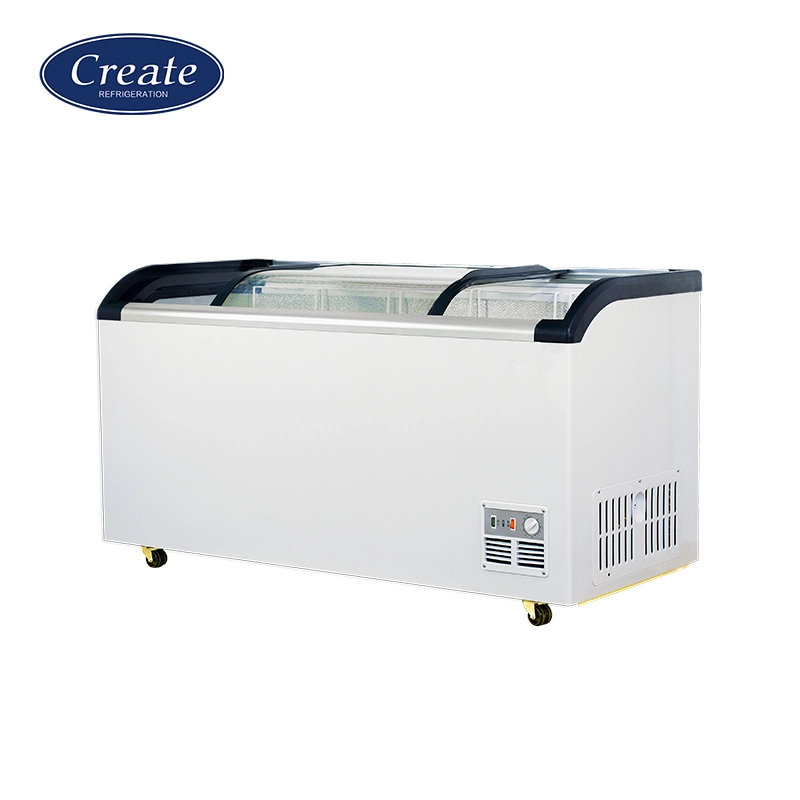
At the same time, fridges for things like dairy or vegetables might run between 0°C and 4°C (32°F–39°F). For example, special units like the supermarket dairy and fruits display showcase are built to consistently hold this precise temperature range. This is done to make sure products stay fresh and safe.

It’s crucial to know just how cold industrial freezers must be when planning a backup system. This is because even small changes can ruin the quality of the products. Steady cold temperatures make sure food stays safe to eat and meets health rules.
When the power goes out, changing temperatures can let microbes grow on perishable items. What’s more, it can permanently damage the texture of frozen foods. So, any power cut has to be dealt with right away. This prevents spoiled goods and money lost.
Types of Backup Power Solutions for Commercial Refrigerators
To keep fridges running without a hitch during blackouts, businesses have a few backup power options to pick from.
Battery Backup Systems
Battery systems run quietly and take over in an instant. There are two main kinds available today:
- Lithium-Ion vs. Lead-Acid Batteries: Lithium-ion batteries are smaller and last longer. They also charge up more quickly than lead-acid ones. But, they cost more to buy at first. Lead-acid batteries are cheaper but need upkeep and don’t last as long.
- Runtime and Capacity Considerations: To size a battery backup correctly, you have to figure out the total power draw of your cooling units. Then, you decide how long you need the backup to last. This is usually somewhere between 4 to 12 hours, based on how high the risk is.
Generator-Based Systems
Generators can run much longer than batteries. However, they need fuel storage and regular service.
- Diesel, Propane, and Natural Gas Options: Diesel generators are powerful but loud. Propane is a cleaner fuel. Natural gas is very convenient if you have a direct line. The best choice really depends on what’s available, how much it costs, and any environmental concerns.
- Automatic Transfer Switches and Load Management: An automatic transfer switch (ATS) is a key part. It senses a power outage immediately. Then, it switches the power over to the generator all by itself, so no one has to do it by hand. Load management gives power to the most important equipment, like fridges, first when backup capacity is limited.
Hybrid Power Solutions Combining Batteries and Generators
Putting batteries and generators together gives you the best of both worlds. You get a quick response from the batteries and long-lasting power from the generator. This hybrid setup makes your business stronger, as it can handle both short power flickers and long blackouts.
System Sizing and Load Calculation
To create a good backup system, you first have to figure out your cooling power needs.
- Identifying Critical Loads in Refrigeration Systems: The most important parts are the compressors, fans, defrost heaters, lights inside the display cases, and the electronic controls. These pieces must stay on during a power cut to keep the stored items safe.
- Estimating Power Requirements Based on Equipment Specifications: You can find the voltage and amperage ratings on each unit’s nameplate. This information helps you calculate the total wattage needed. Adding up these numbers for all essential equipment gives you a starting point for sizing your batteries or generator.
- Duration of Backup Needed Based on Risk Assessment: Places with lots of long power cuts need bigger systems than areas where outages are rare. Looking at past outage information helps you figure out how many hours of power the system should be able to provide on its own.
Thermal Retention Strategies to Extend Cooling During Outages
Electrical backups are great for keeping things running. But you can also use passive heat-saving methods. These help the cooling last longer without any power.
Improving Insulation in Cold Storage Units: Better insulation materials can really cut down on how much heat gets in. This is a big deal for larger setups like walk-in cold storage units, where good insulation is key to keeping the temperature stable for a long time. Create Refrigeration uses safer, energy-saving, and eco-friendly materials to make its commercial refrigerators. Thus, they can hold their internal temperatures for longer when the power is out.
Use of Phase Change Materials (PCMs) and Ice Packs: Phase change materials, or PCMs, soak up heat when they change form, like when ice melts. This creates a heat buffer inside coolers or cold rooms. Ice packs work in a similar way, slowing down the temperature rise during a blackout.
Reducing Door Openings and Heat Infiltration: Simple rules for daily work can make a huge difference. For example, limiting how often doors are opened can dramatically lower the amount of heat that gets inside during an outage. Good staff training is very important for this.
Integration with Smart Monitoring and Alert Systems
Today’s tech lets you watch over temperature-controlled areas in real time. You can even do it from far away.
- Real-Time Temperature Monitoring Tools: Sensors keep a constant eye on the temperatures inside the units. If the temperature goes out of the safe range because of a power failure or a mechanical problem, they trigger an alert right away.
- Remote Access and Control via IoT Platforms: With IoT platforms, managers can change settings or start a shutdown from anywhere. This is a huge help when staff can’t get to the location quickly in an emergency.
- Automated Alerts for Power Loss or Temperature Deviations: These systems can send a text or email if they spot a problem. This allows someone to take action before anything spoils. So, it buys you precious time during a crisis.
Installation Best Practices and Safety Considerations
Installing the system correctly is key. It makes sure everything is safe and works as well as it can.
- Electrical Wiring Standards for Backup Systems: All wiring has to follow national electrical codes. This includes rules for grounding and overload protection to stop fire hazards when using backup power.
- Ventilation Requirements for Generators and Batteries: Generators produce exhaust, and batteries can get hot. Both need plenty of fresh air to prevent overheating or a buildup of dangerous fumes in closed-off areas.
- Compliance with Local Codes and Regulations: You might need a permit to install a generator. There could also be noise rules in city areas. It is always a good idea to check with your local authorities before you start.
Maintenance Protocols for Long-Term Reliability
A system that’s taken care of will be ready when you need it most. It needs to work in the real world, not just on paper.
- Routine Testing of Backup Systems Under Load Conditions: You should test the system every month under a full load. This check makes sure all the parts, from the ATS switches to the inverter circuits, are working right under real stress, not just sitting idle.
- Battery Health Checks and Replacement Schedules: Batteries wear out over time. Checking their voltage now and then can help you find weak cells early. Also, following the maker’s replacement schedule helps you avoid a sudden failure during an outage.
- Fuel Management Plans for Generator-Based Systems: Use fuel stabilizers so the diesel doesn’t go bad. Refill the tanks regularly to make sure they’re always ready. On top of that, keeping a log of fuel use helps you guess when you’ll need more.
Cost Considerations and Return on Investment (ROI) Analysis
The initial cost might look steep. However, the long-term savings usually make it worth it. You save so much just by preventing spoiled products. Besides, there could be other perks, like lower insurance rates or tax breaks available in your area for making these kinds of upgrades.
By using a top-tier brand inverter compressor that is well-known in the industry, we make sure our products are more energy-efficient and run more stably. This can save you up to 50% on your electricity bills in just one year.
Equipment that saves energy also lowers your daily running costs. This also puts less stress on your backup systems. As a result, it improves your ROI over time with smaller utility bills, even when there isn’t a power outage.
Create Refrigeration: A Trusted Partner in Commercial Cooling Solutions
SHANDONG CREATE REFRIGERATION CO.,LTD. is located in Xingfu Industrial Park, Binzhou City, Shandong Province, China. Our products meet the standards for markets in every country. We offer top-level energy-saving products for customers all over the world, including North America, Europe, and Southeast Asia.
Create Refrigeration focuses on making cooling equipment for commercial supermarkets, stainless steel kitchen gear, and modular shelving systems. You can customize them all through our OEM/ODM services.
We have a skilled design team that can make a 3D model for your supermarket. It doesn’t matter if you’re updating an old store or opening a new one. We can provide layout plans and CAD drawings that fit your business goals perfectly.
Our products have a wide range of uses, such as high-performance cooling systems and green refrigerants like R290. This fits perfectly with the green technology ideas supported across the globe today.
Conclusion
Putting together a strong backup system for commercial refrigerators takes a lot of careful thought. First, you have to identify the most important electrical loads. Then, you need to choose the right mix of batteries and generators. Finally, all these parts need to be connected to smart monitoring systems.
By mixing solid engineering with heat-saving tricks, you can ensure your systems never stop working. This is true even if the local power grid is unstable.
Working with dependable suppliers like Create Refrigeration leads to better system performance. This is because you get custom designs that are backed by global certifications and helpful customer service.
FAQs:
Q1: How do I determine how cold industrial freezers need to be kept?
A: Generally, industrial freezers need to be kept at -18°C (0°F) or even colder, depending on the product. Keeping this temperature steady stops microbes from growing and protects the texture of frozen items all year long.
Q2: Can I integrate solar panels into my commercial refrigerator backup system?
A: Absolutely! Pairing solar panels with lithium-ion batteries is a great, sustainable option. This is especially helpful in places where getting fuel is difficult or where having a green certification helps your brand.
Q3: Does Create Refrigeration provide support after installation?
A: Yes, our products come with a one-year warranty, and we give you 1% of the spare parts for free. We also have staff on call 24/7 to help you.

